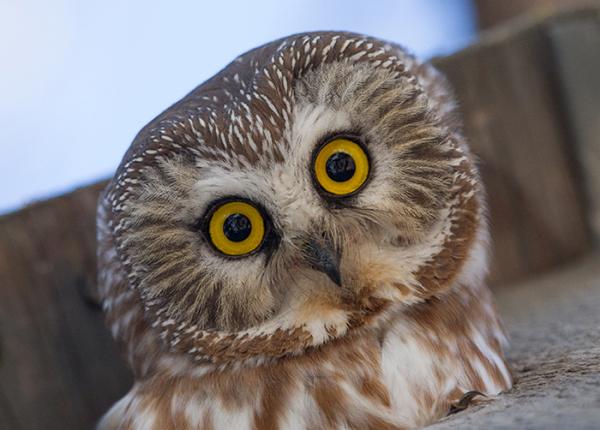Photos by Bryce Gaudian
This opportunity came about when I had a trip already planned to be in Southern California to meet a new grandchild. I saw a post of these Barn Owls on Birds of Prey. Out of the blue, I messaged the photographer and asked if he would be willing to share the location. Within 10-minutes he gave me full details, stressing three times had to be there before 6 a.m. when the gates to the park would be opened.
My friend who was staying in Topanga was willing to leave at 3:30 am to get there. We were the 2nd car in line. By 6 a.m. there were 27 cars full of photographers behind us. We got to the tree cavity by 6:03 am and literally had 6 minutes to take photos in pre-dawn light before these precious and curious Barn Owlets descended into the enormous tree cavity.
It was an epic moment. Then one of the photographers who could tell was on Cloud -999 came up to me and said the Mother Barn Owl was at that moment in an enormous tree 1/8 mile away.
He gave directions and … here are the Barn Owls I was so tremendously given favor to photograph. The fulfillment of a lifetime dream. By the way, 15 feet from the Barn Owlets was a Western Screech Owl nest with 5 Owlets.
I was able to get one photo of one of the parents to make these my 11th and 12th Owl species to date. I’m filled with gratitude to the California birder who trusted to give me the Barn Owls Location. It’s been one of the major highlights of my Birding Adventures thus far.


I do not take the photos. I share stories and photos from a bunch of different sources. The camera lenses used are typically very large and look like small telescopes. The owls don’t really want people around them, and shooting in lower light needs bigger optics to let in what light is available or the photos get very grainy.
I don’t know much about cameras myself, so here is a primer from a wildlife photographer and here he is with one of his typical lenses.
Screech Owls can be tough to spot. They are quiet, so when you hear one it is typically quite close, but they are tiny like a beverage can, but extremely camouflaged. Horned owls tend to move around a bunch and hang out later at night so they can be a bit tougher to find. Barred Owls are pretty vocal and tend to hang in the same trees every day, so they can be easier to spot. They all work a bit differently. If you patrol around regularly at dawn or dusk and listen for them, you can narrow down their territory.
You’re awesome for this answer, thank you.
I try to be useful sometimes! Looking things up teaches us both, so it’s a win-win.